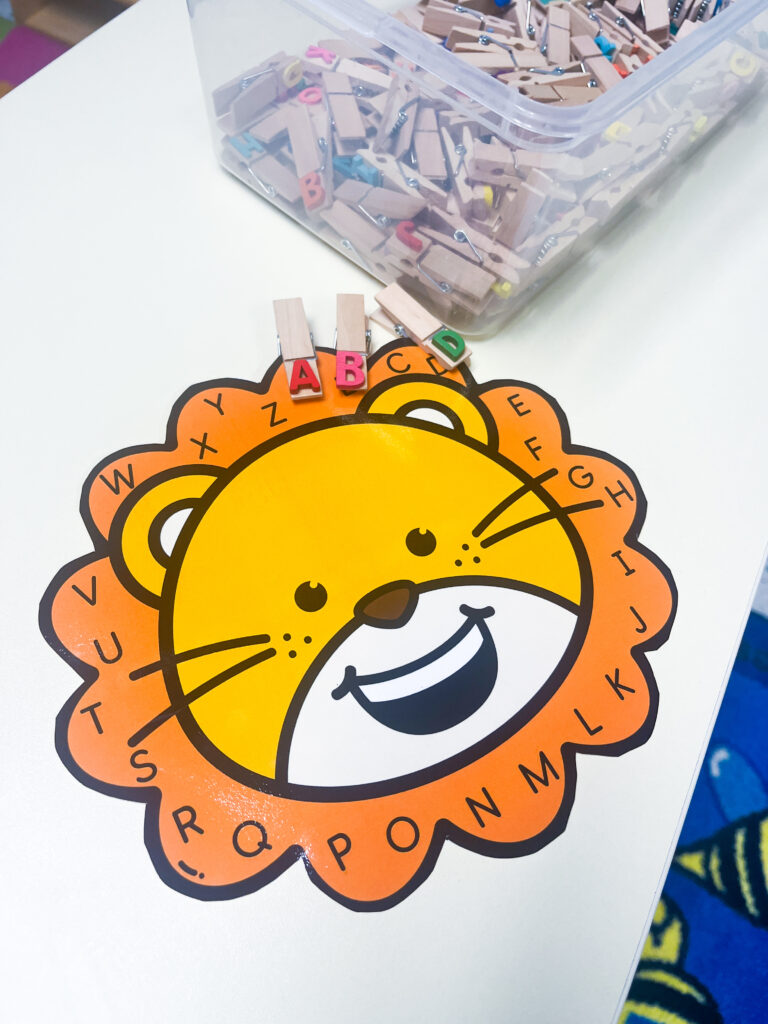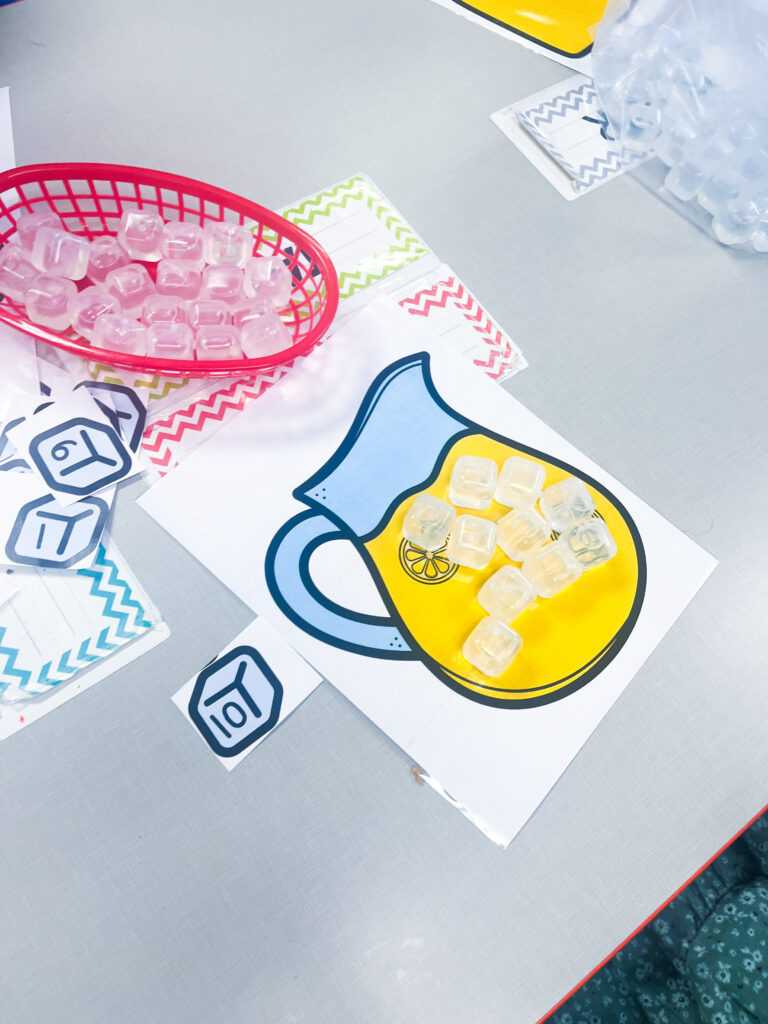


L is for Lion!
*Lion Letter Clipping: Clip matching clothespins on the letters on the lion. Find this resource HERE.
*Lion Letter Craft: Make a lion out of the letter L! We make an animal for each letter and save them to make our alphabet books!



L is for Ladybug!
*Ladybug Sensory Bin: Use ladybug containers, black beans, and red craft poms to make a fun sensory bin. Add tools like tweezers to the bin for extra fine-motor fun!
*Counting Ladybugs on a Leaf: Use these realistic wooden ladybug stickers and fake leaves to count the ladybugs and practice fine motor skills. This is also a fun keepsake!
*Ladybug letter find: Here is a fun FREE ladybug letter find worksheet! I love to put letter mini erasers in ladybug containers and have my students open the containers, identify the letters, and then fine and dot the letters on their worksheet.



L is for Llama!
*Llama Llama Red Pajama: We love reading Llama Llama books; they are perfect for learning about the letter L! I also got this cute Llama stuffed animal from Kohls.
*Llama Clothespin Puppet: Decorate a llama and cut across the mouth. Attach to a clothespin for a cute puppet. This is also a great activity for fine motor practice!


L is for Lemons and Lemonade!
*Make Lemonade: Use a juicer or lemon squeezers to make lemonade!
Making lemonade is simple and refreshing! Here’s a basic recipe:
Ingredients:
- 4-6 lemons (depending on size and how tart you like it)
- 1/2 to 3/4 cup of sugar (adjust to taste)
- 5 cups of cold water (divided into 1 cup of warm water and 4 cups of cold water)
- Ice (optional)
Instructions:
Serve: Add ice to your glasses if desired, pour in the lemonade, and enjoy!
Juice the Lemons: Roll the lemons on the countertop to get more juice. Cut them in half and squeeze the juice into a pitcher, removing any seeds. You should have about 1 cup of fresh lemon juice.
Dissolve the Sugar: In a separate glass or small bowl, add 1 cup of warm water. Stir in the sugar until it dissolves completely. This step helps the sugar mix better, especially if you’re not using a syrup.
Combine the Lemon Juice and Sweetened Water: Pour the lemon juice and the sweetened water into a large pitcher. Add the remaining 4 cups of cold water and stir well to combine.
Taste & Adjust: Taste your lemonade and adjust the sweetness by adding more sugar if needed, or more cold water if it’s too strong or too sweet.



The Lemon Lava experiment is a fun and colorful science activity that demonstrates how acid (from the lemon juice) reacts with baking soda to create a bubbly “lava” effect. It’s a great way to learn about chemical reactions, and kids (and adults!) will love it.
Materials:
- 1 lemon
- Baking soda (about 1-2 teaspoons)
- Food coloring (optional, for fun colors)
- A small plate, bowl, or shallow dish
- Knife (for cutting the lemon)
- Spoon or dropper (for adding the baking soda)
- A small bowl of water (optional, to help dissolve the baking soda if needed)
Instructions:
- Prepare the Lemon:
- Roll the lemon on the countertop to soften it, which helps release more juice.
- Cut the lemon in half. You can also cut a small slice off the bottom of the lemon so it sits flat in your dish.
- Create the Lava Base:
- Place the lemon half in the shallow dish or bowl.
- Use a spoon to gently scoop out a small amount of the lemon’s pulp from the center, creating a well. This helps the “lava” to flow better.
- Add Baking Soda:
- Sprinkle a generous teaspoon of baking soda directly into the well of the lemon.
- Add Food Coloring (Optional):
- If you want to make it more colorful, add a few drops of food coloring into the well with the baking soda.
- Make the Lava Flow:
- Slowly pour a small amount of water into the lemon half, directly onto the baking soda. You should see immediate fizzing and bubbling—this is the “lava” effect!
- The acid in the lemon juice reacts with the baking soda (a base), creating carbon dioxide gas, which causes the bubbling reaction.
- Watch the Lava Flow:
- The reaction will create an effervescent “lava” effect, as the bubbles spill over the sides of the lemon. It will fizz and bubble for a little while, creating a fun and colorful show.
What’s Happening:
- Chemical Reaction: The acid in the lemon (citric acid) reacts with the baking soda (sodium bicarbonate) to produce carbon dioxide gas. The gas bubbles cause the fizzing, and the reaction looks like a mini volcanic eruption!
- Fizzing and Bubbling: The bubbles are caused by carbon dioxide gas escaping from the liquid, and they push the liquid out of the lemon, creating the lava-like flow.
Extra Fun Variations:
- Lemon Lava Fountain: Use a small container or bowl under the lemon to catch the liquid and make it look like a fountain of lava.
- Multiple Colors: Try using multiple colors of food coloring to create a rainbow lava effect.
This experiment is a great way to explore chemical reactions and have a little fun at the same time!


Ice Lemonade Counting
Count ice cubes and put them on the lemonade picture! I used THESE ice cubes and added mini tongs for extra fine motor practice! Click HERE for this fun and free lemonade counting activity!



L is for Leaves!
Check out our Fall Activities Post for some fun leaf activities!



L is for Light Table!
We love using the light table in our classroom! Find translucent materials like jewels, Magnatiles, and acrylic scatters to use to do different activities.
Alphabet Printables
Find alphabet activities, worksheets, games, and printables HERE!




*This post contains affiliate links.









